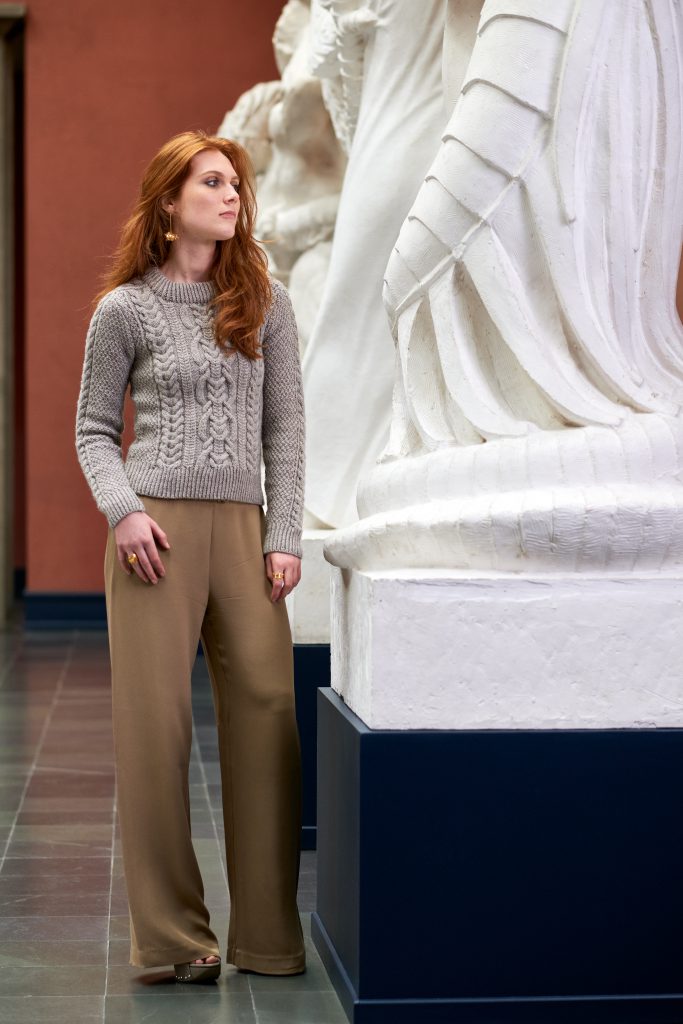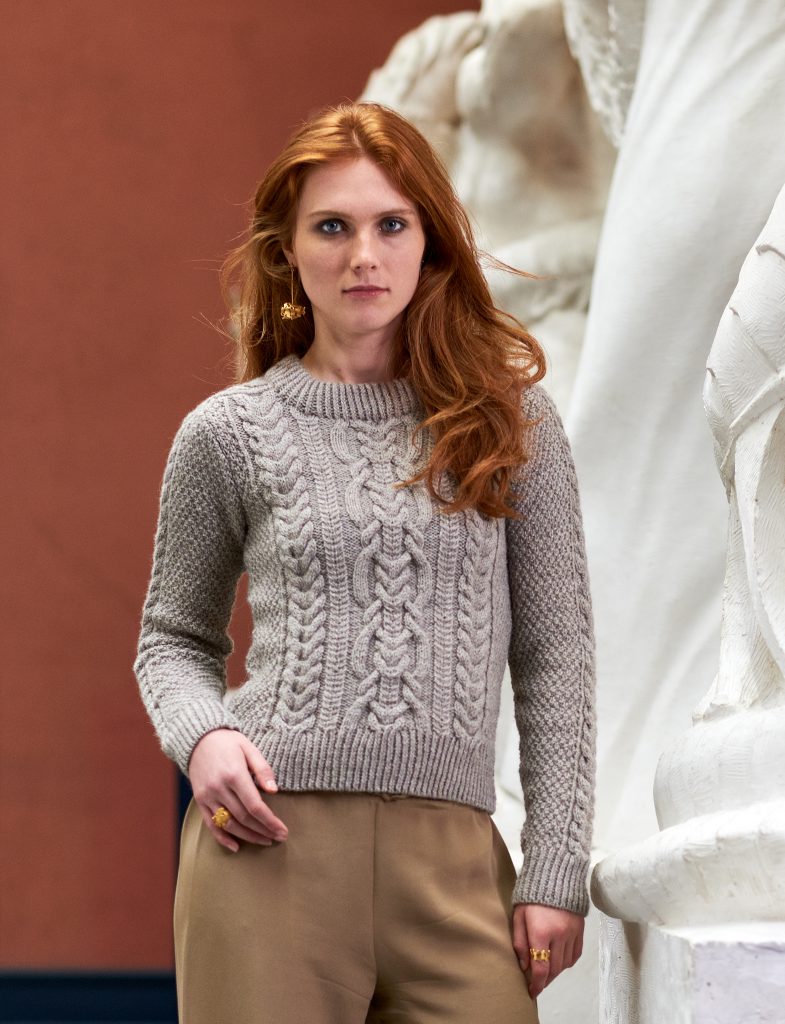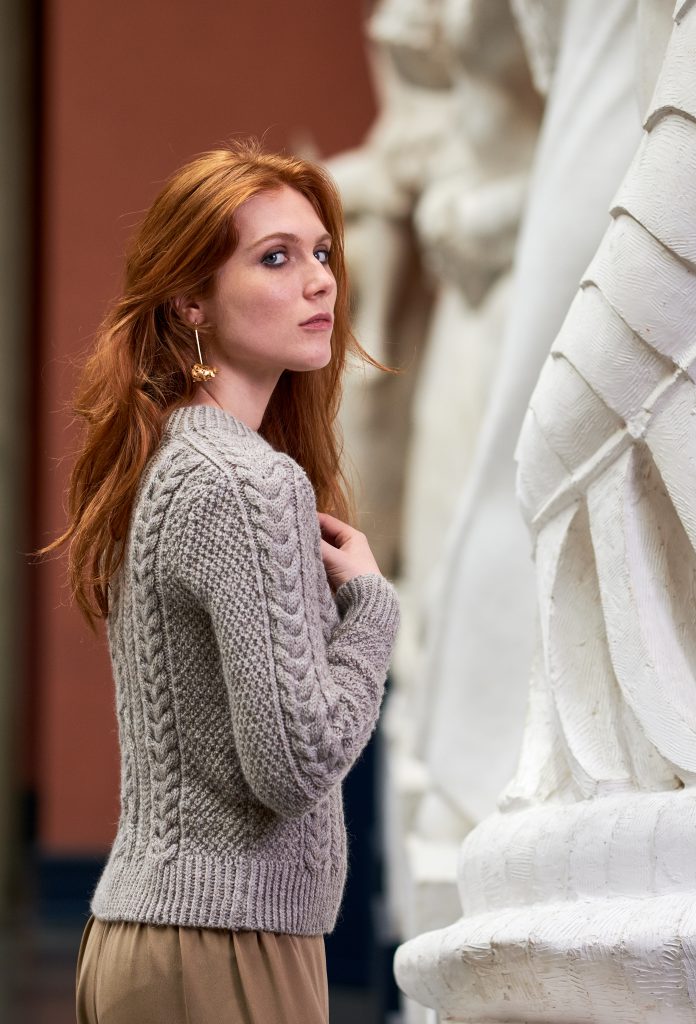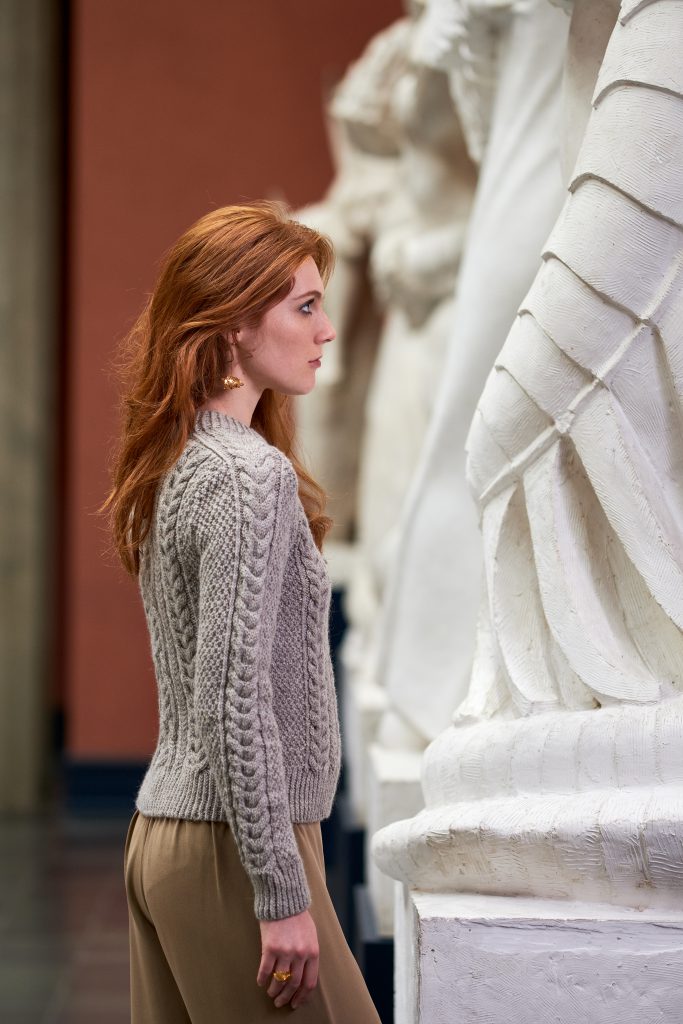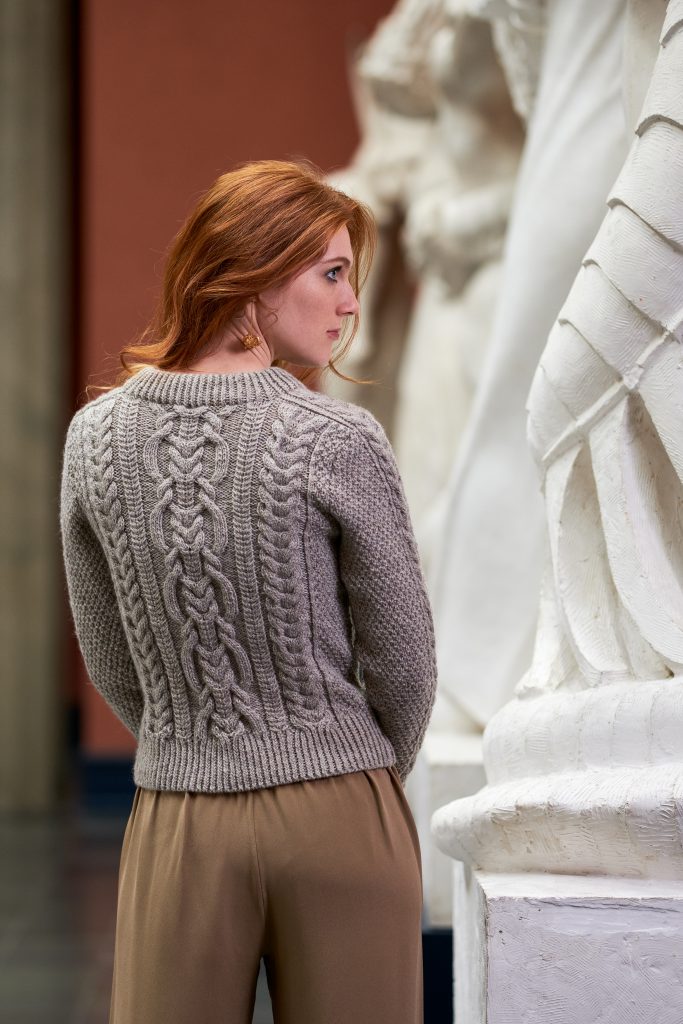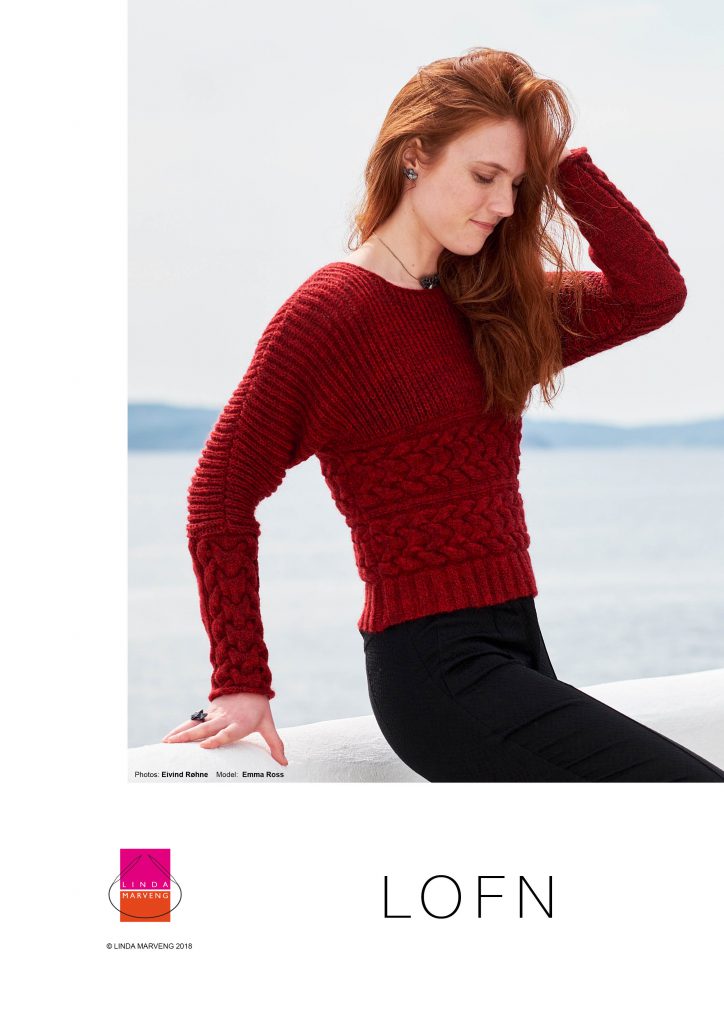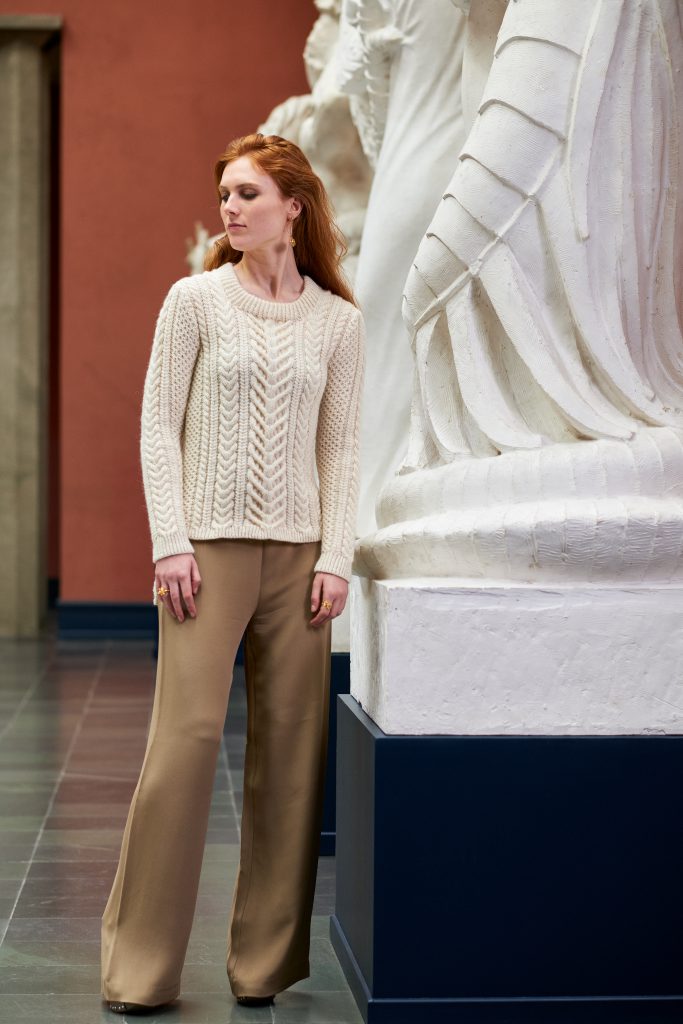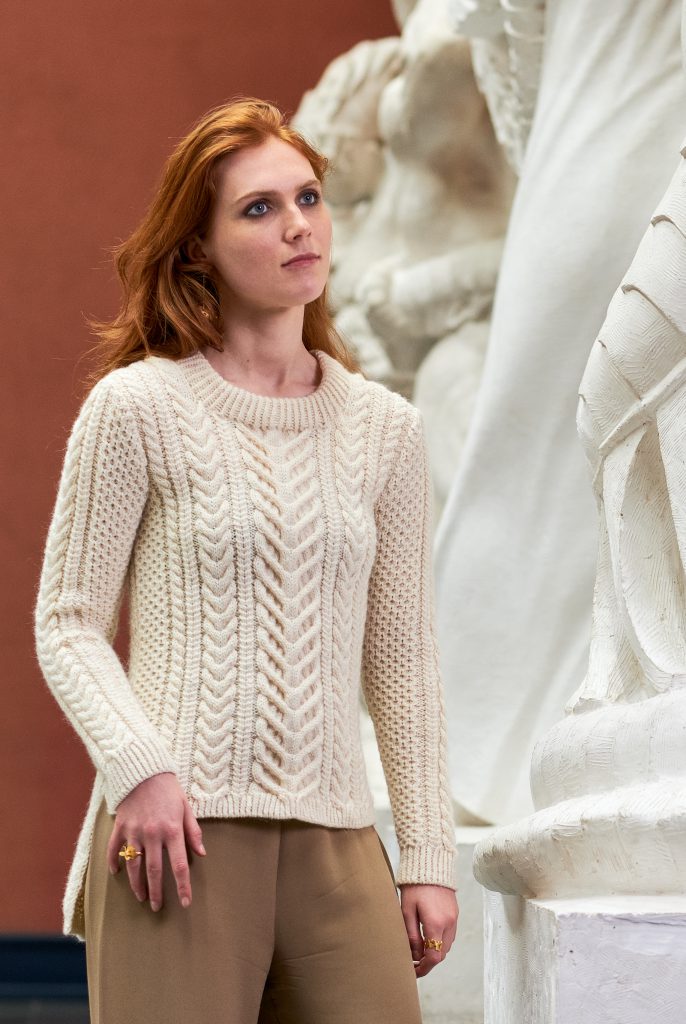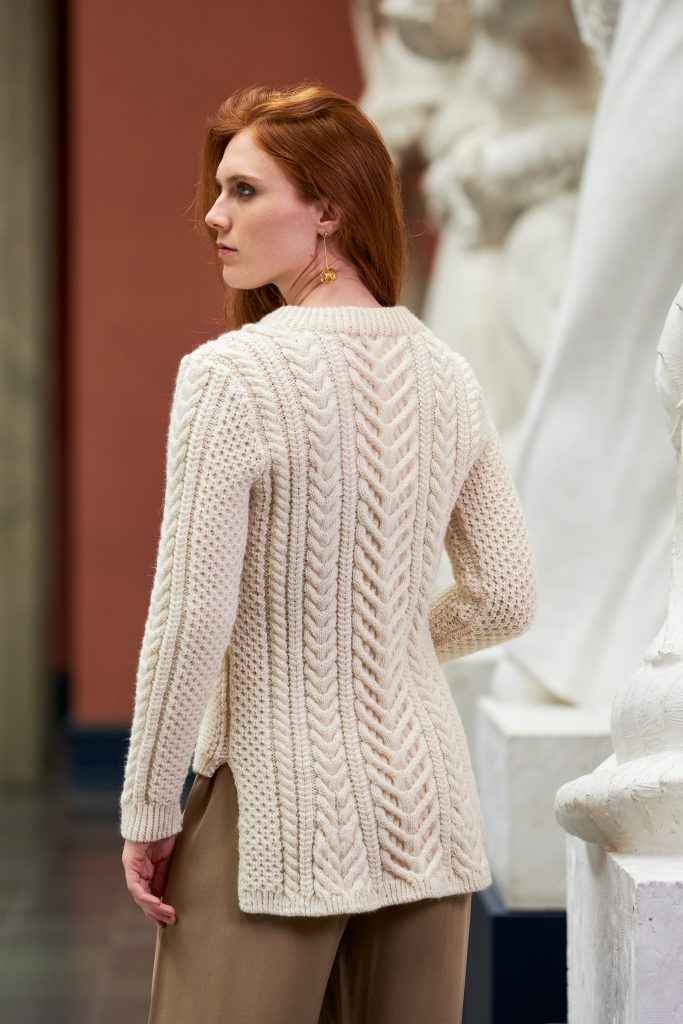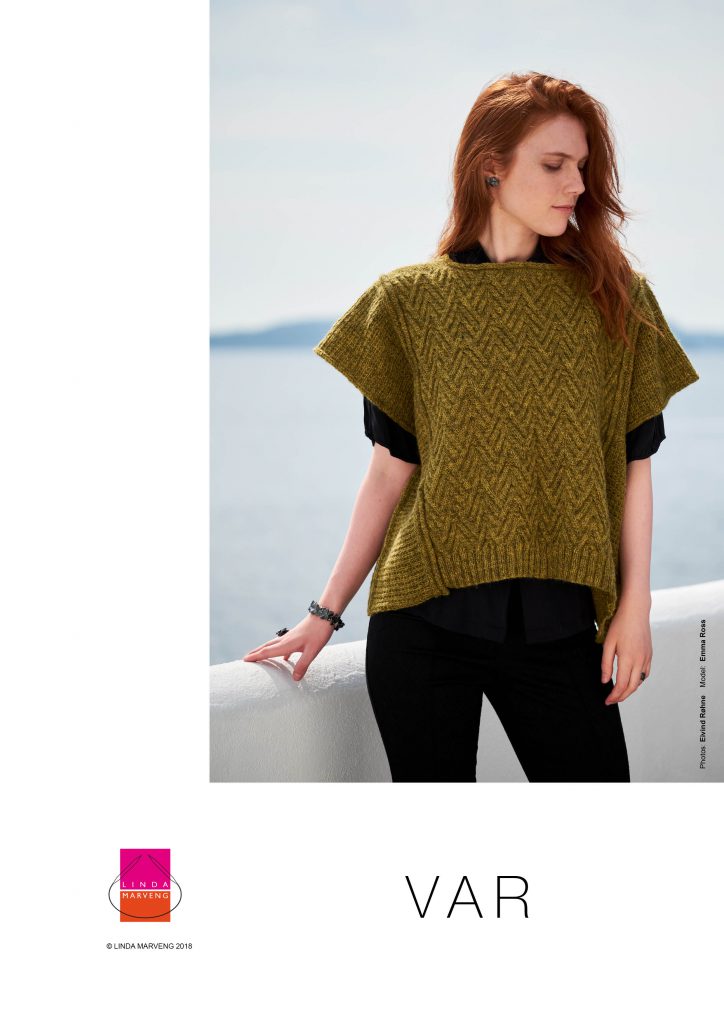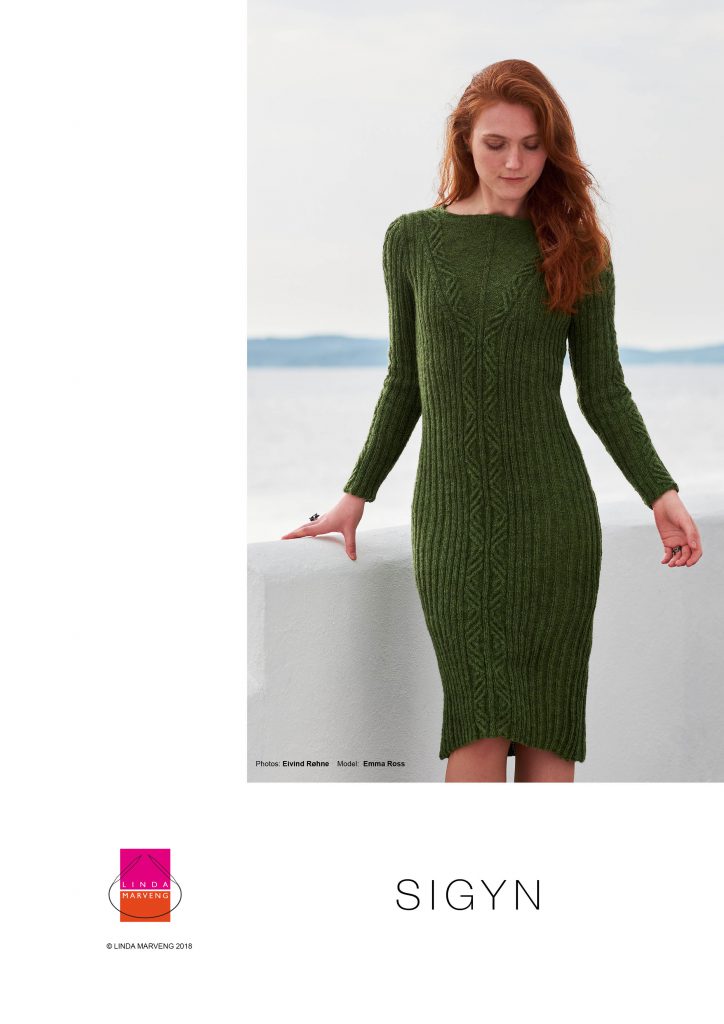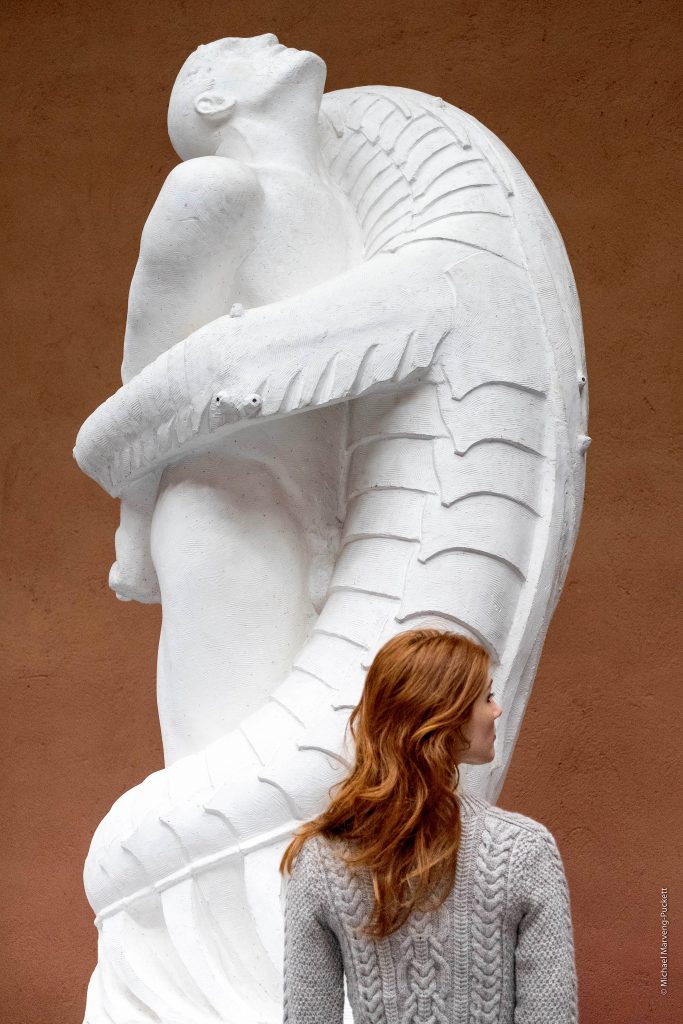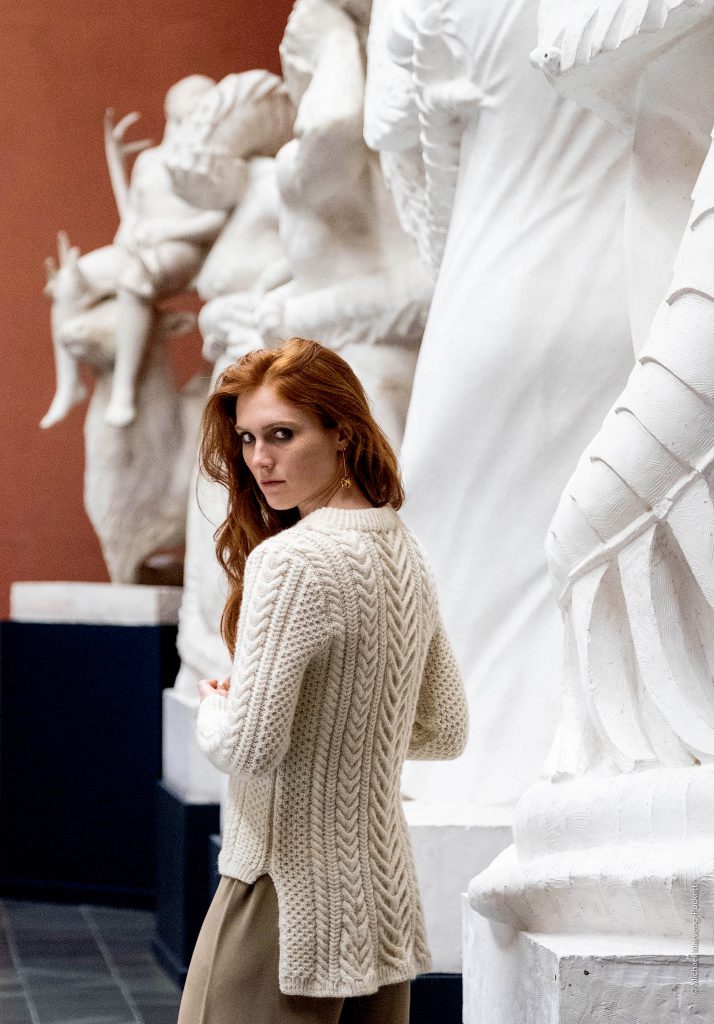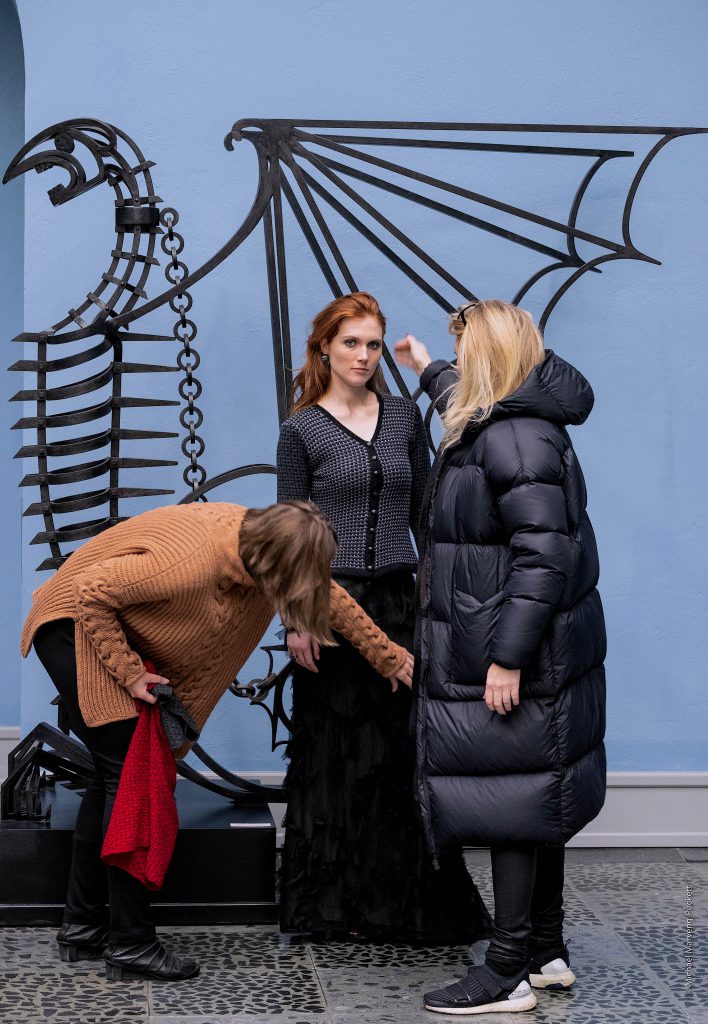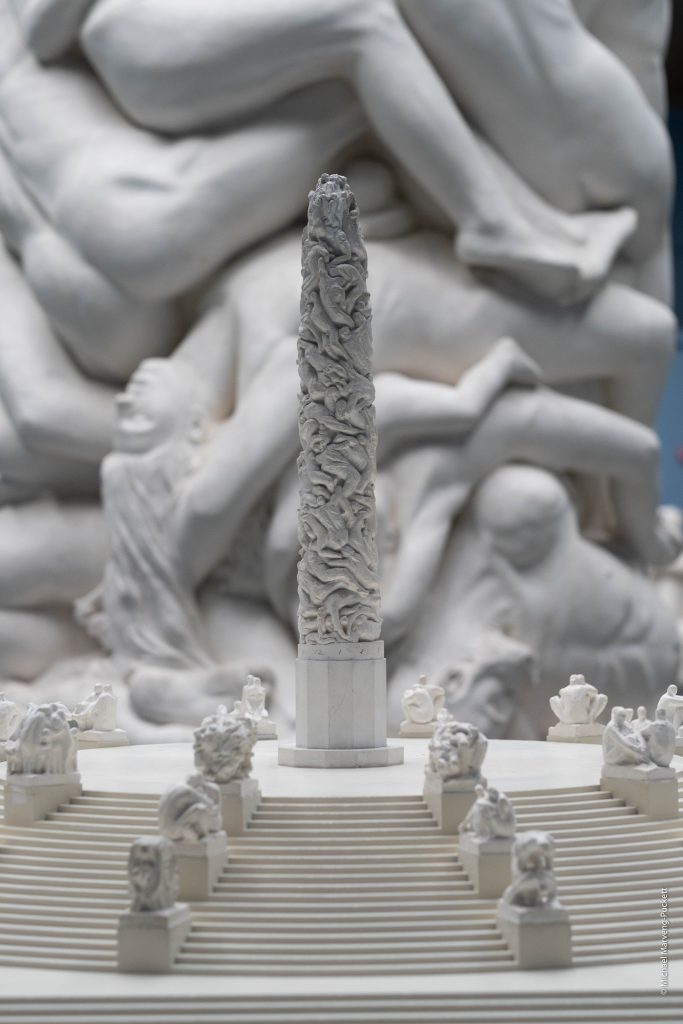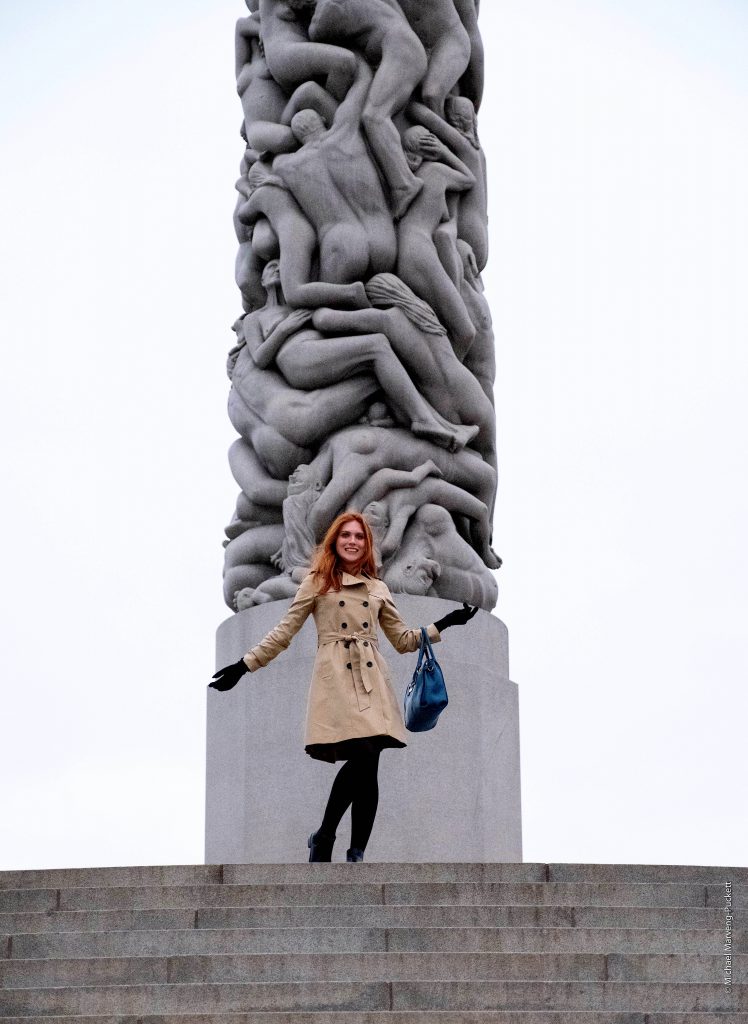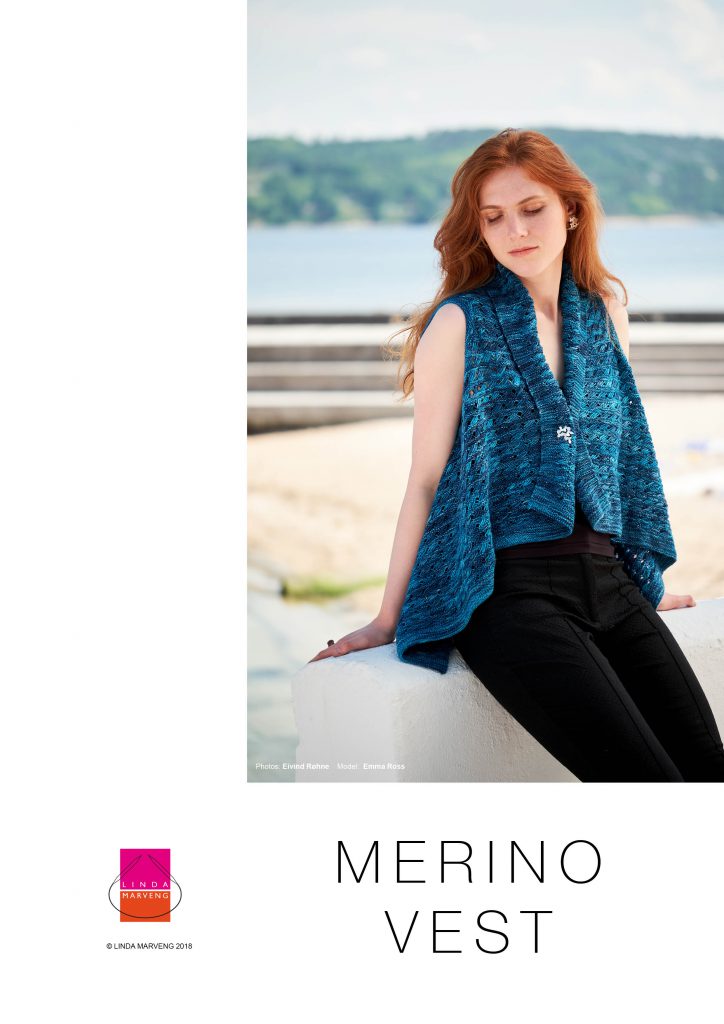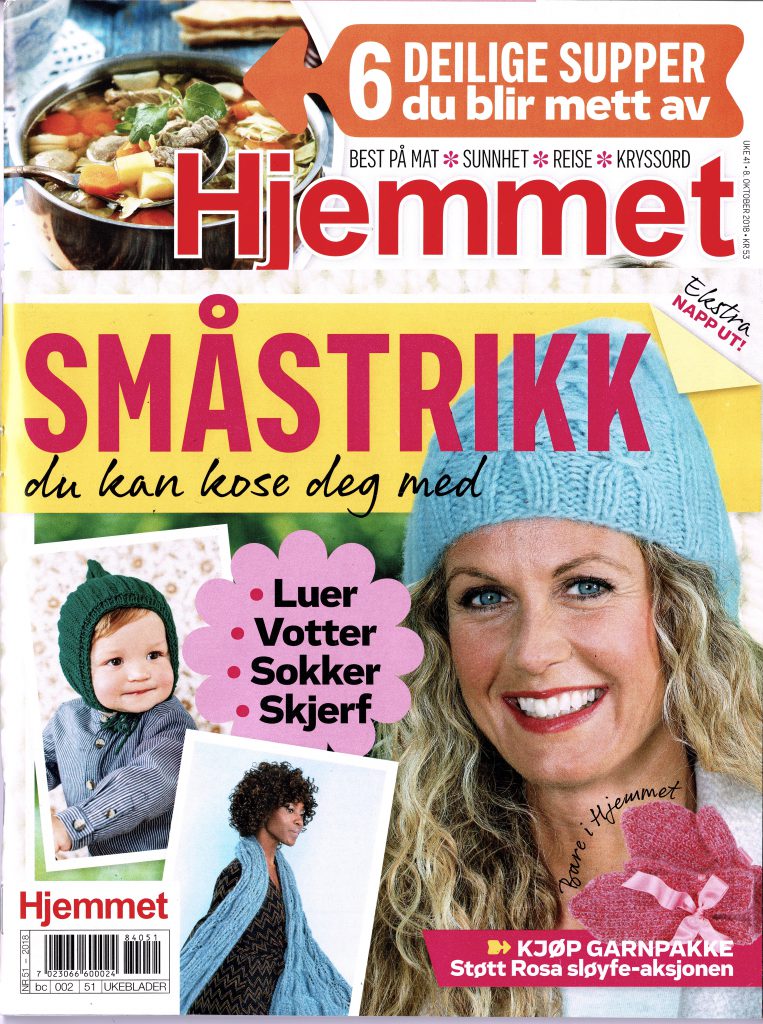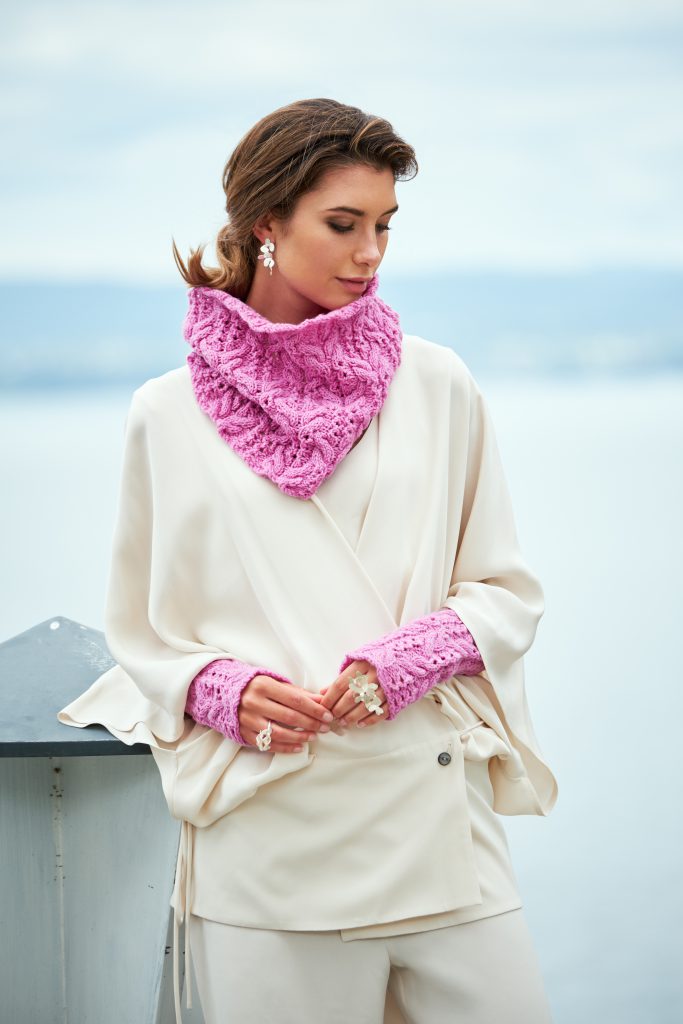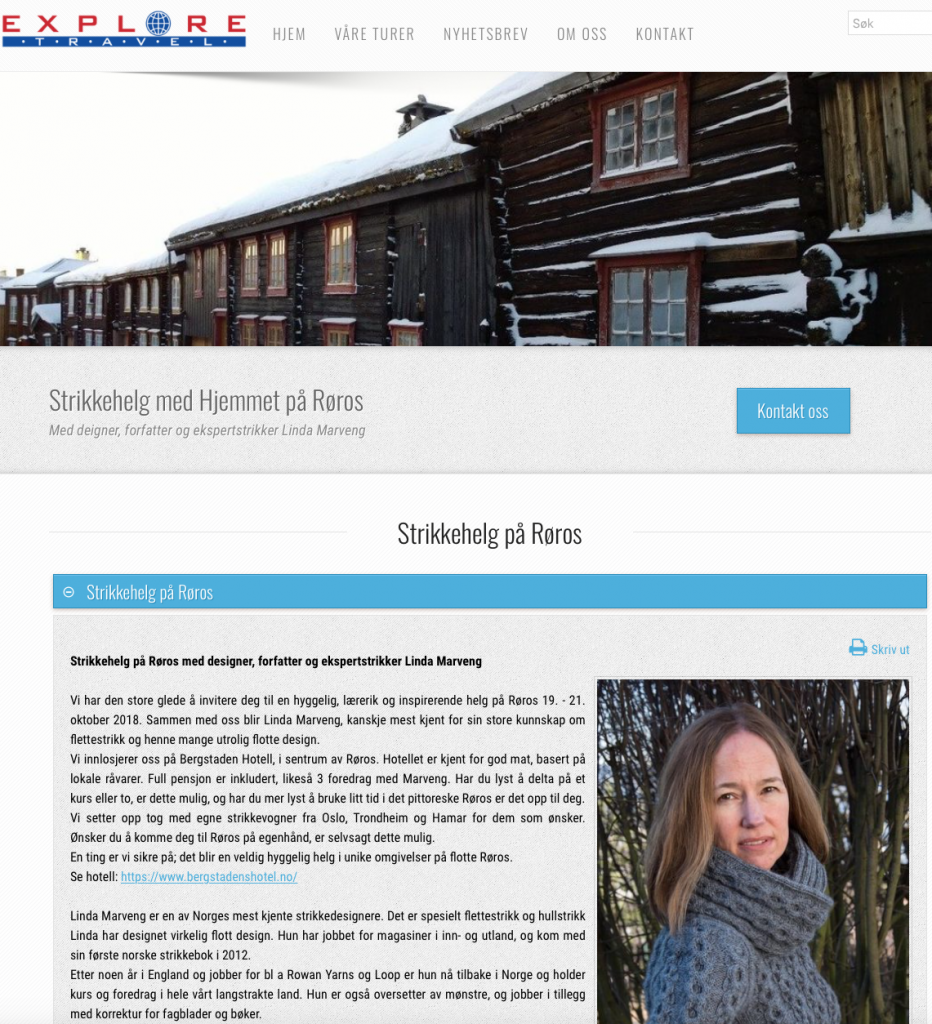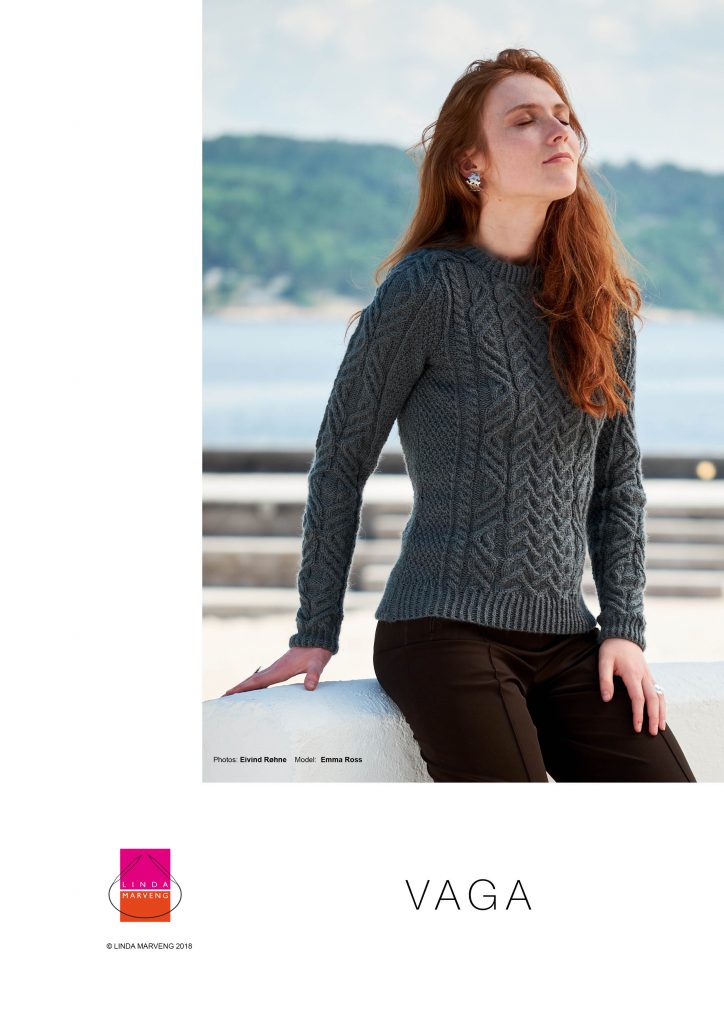 The Rørbye Cardigan looks stunning on model Emma Ross, thanks to Hair & Makeup Stylist Sissel Fylling and Photographer Eivind Røhne who captured these brilliant photos at the Vigeland Museum last November. The jewellery that match the stitch patterns in the jacket was on loan from Kaja Gjedebo Design. The cardigan was made for knit.wear Fall/Winter 2017 and knitted in the lovely Dale Eco Wool using 4 mm/US 6 needles. Hence this is the second set of photographs taken of it. The colour fitted into the grey plinths to the plaster sculptures in the Monolith Hall. You can see Em in front of the finished granite Monolith sculpture in the Vigeland Park in this blogpost: Behind the Scenes: Photoshoot at Vigeland Museum. “The Monolith (Monolitten), implying the totem to be fabricated from one (mono) solid piece of stone (lith)”, see Wikimedia link.
The Rørbye Cardigan looks stunning on model Emma Ross, thanks to Hair & Makeup Stylist Sissel Fylling and Photographer Eivind Røhne who captured these brilliant photos at the Vigeland Museum last November. The jewellery that match the stitch patterns in the jacket was on loan from Kaja Gjedebo Design. The cardigan was made for knit.wear Fall/Winter 2017 and knitted in the lovely Dale Eco Wool using 4 mm/US 6 needles. Hence this is the second set of photographs taken of it. The colour fitted into the grey plinths to the plaster sculptures in the Monolith Hall. You can see Em in front of the finished granite Monolith sculpture in the Vigeland Park in this blogpost: Behind the Scenes: Photoshoot at Vigeland Museum. “The Monolith (Monolitten), implying the totem to be fabricated from one (mono) solid piece of stone (lith)”, see Wikimedia link.
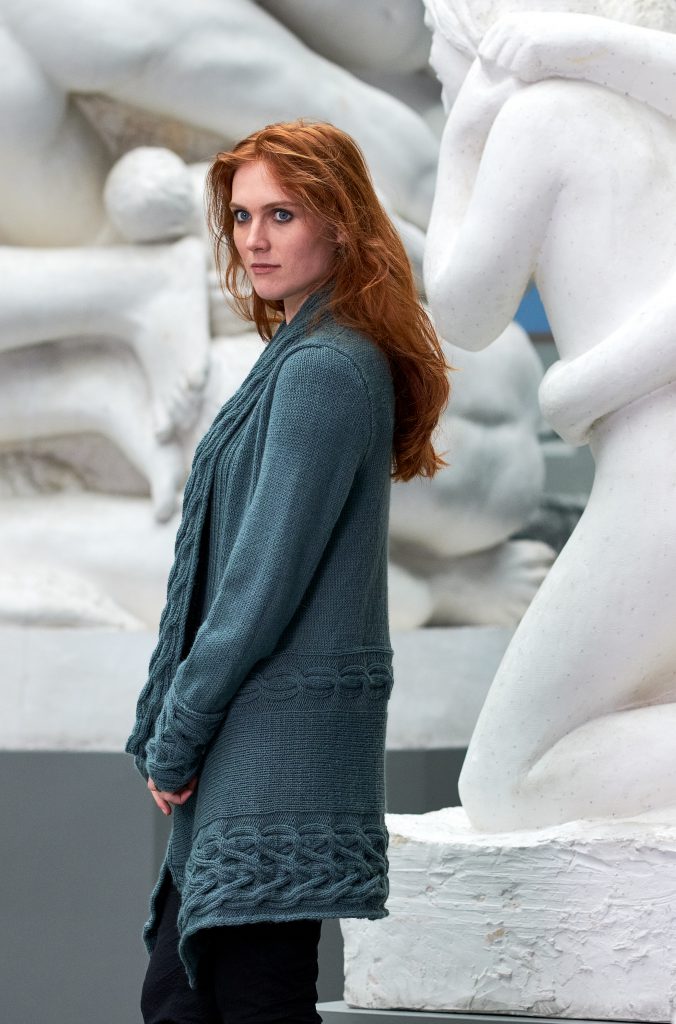 A classy and sophisticated knitted cardigan in a contemporary style. The waterfall bottom is created by knitting a sideways cable panel. To offset the cables, the body is all in stockinette stitch, with the exception of the cuff. Each sleeve begins in a sideways knitted cable panel. Leave it open, or pin the cardigan together at the front or in the side, if you prefer to wrap it all around you.
A classy and sophisticated knitted cardigan in a contemporary style. The waterfall bottom is created by knitting a sideways cable panel. To offset the cables, the body is all in stockinette stitch, with the exception of the cuff. Each sleeve begins in a sideways knitted cable panel. Leave it open, or pin the cardigan together at the front or in the side, if you prefer to wrap it all around you.
 Em is wearing size Small, but the pattern is available in sizes XS to 2XL with a bust circumference of 87.5 to 129.5 cm/34.5 to 51″ closed. I choose to style the cardigan with some black pencil pants and sky high sculptural shoes by Camilla Skovgaard. I wanted to show you how you can pin the cardigan together in the side and also how the interfacing on the collar looks like. To pin it I used one of Kaja Gjedebo’s divine brooches.
Em is wearing size Small, but the pattern is available in sizes XS to 2XL with a bust circumference of 87.5 to 129.5 cm/34.5 to 51″ closed. I choose to style the cardigan with some black pencil pants and sky high sculptural shoes by Camilla Skovgaard. I wanted to show you how you can pin the cardigan together in the side and also how the interfacing on the collar looks like. To pin it I used one of Kaja Gjedebo’s divine brooches.
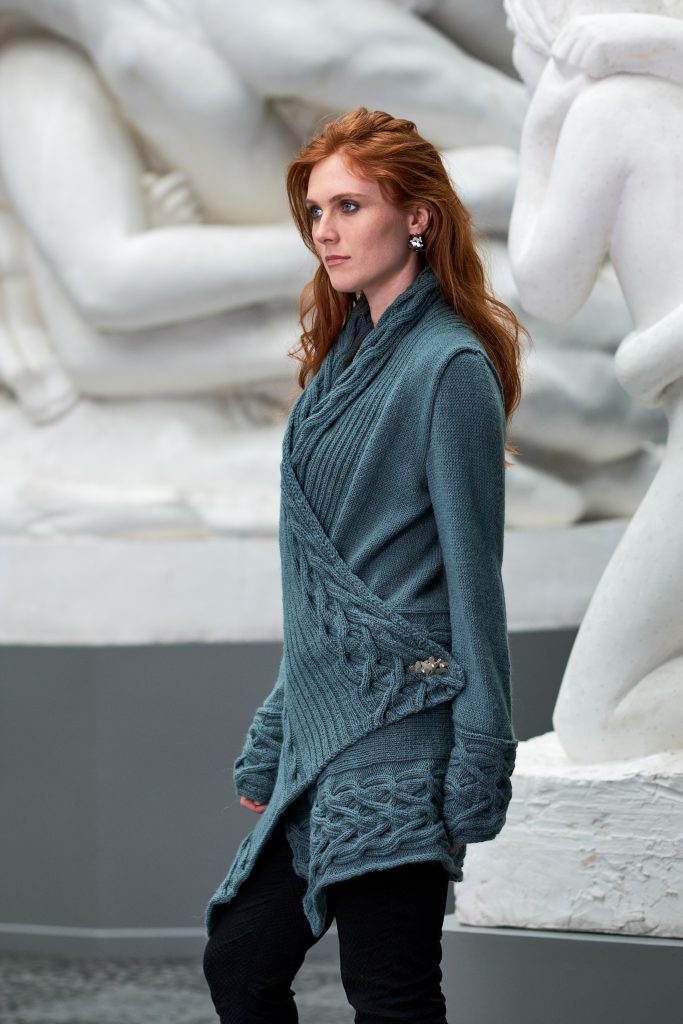 I wanted to show you how you can pin the cardigan together in the side and also how the interfacing on the collar looks like. To pin it I used one of Kaja Gjedebo’s divine brooches.
I wanted to show you how you can pin the cardigan together in the side and also how the interfacing on the collar looks like. To pin it I used one of Kaja Gjedebo’s divine brooches.
 The contract I had signed for photographing at the museum, listed a number of conditions, such as have a security clearance of 0.5 meter/5.4 yards to any of the sculptures or their plinths. We did our best to comply with all the conditions. The last but certainly not least condition stated that any eventual damages to the sculptures, the plinths or of any constructional type must be compensated by responsible Marveng-Puckett. Eivind joked that all he had to do was to forget to secure his huge flash light (read: it did however have three legs) so it would fall over and cause havoc, since he would not need to pay for that. We all laughed and I told him that he would need to pay too.
The contract I had signed for photographing at the museum, listed a number of conditions, such as have a security clearance of 0.5 meter/5.4 yards to any of the sculptures or their plinths. We did our best to comply with all the conditions. The last but certainly not least condition stated that any eventual damages to the sculptures, the plinths or of any constructional type must be compensated by responsible Marveng-Puckett. Eivind joked that all he had to do was to forget to secure his huge flash light (read: it did however have three legs) so it would fall over and cause havoc, since he would not need to pay for that. We all laughed and I told him that he would need to pay too.
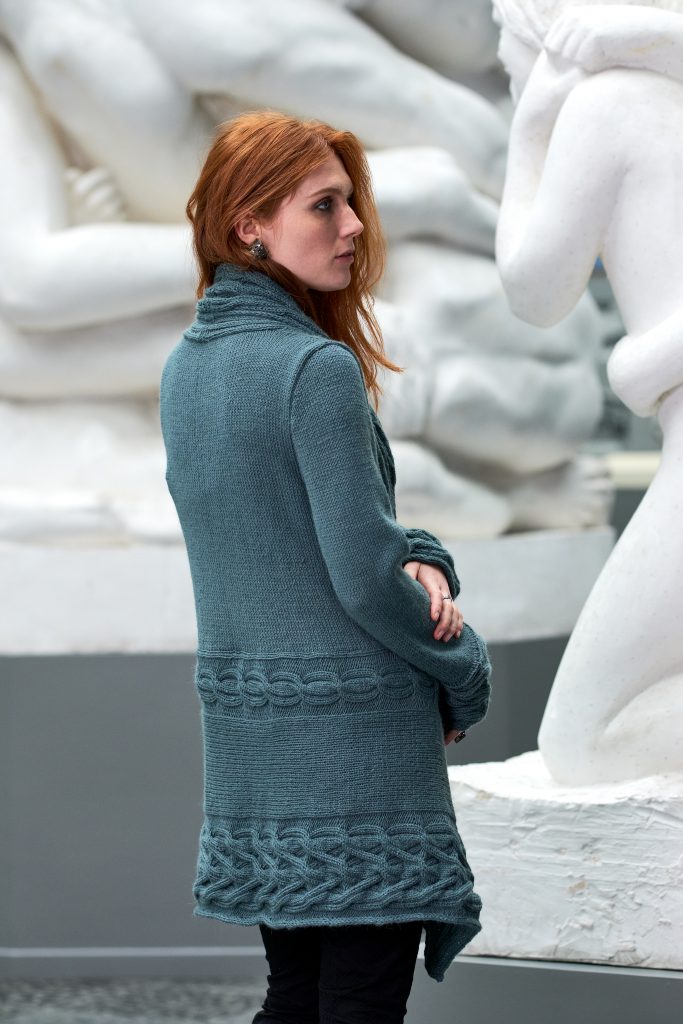 The English pattern is now available on Ravelry and on Loveknitting in addition to inside the knit.wear Fall/Winter 2017 digital magazine, while the Norwegian pattern will be printed in Familien at a later date. Thank you to my fantastic team for these fantastic photos!
The English pattern is now available on Ravelry and on Loveknitting in addition to inside the knit.wear Fall/Winter 2017 digital magazine, while the Norwegian pattern will be printed in Familien at a later date. Thank you to my fantastic team for these fantastic photos!

